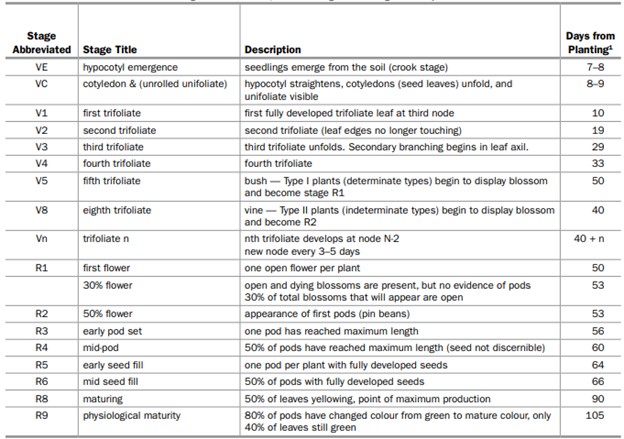Bean varieties are characterized by their growth habitat. Indeterminate plants continuously grow and exhibit long vines. Most of the commonly grown bean types have a semi-determinate growth habit, meaning they continue to grow after flowering begins and develop short to long vines. Determinate types tend to flower and ripen over a short period. Determinate types (also called “bush”) can be more susceptible to moisture and heat stress than indeterminate or “vining” types, which flower and fill seed over a longer period.
In addition to determinate and indeterminate plant types, the growth of beans is also identified as:
Type I — determinate bush growth habit, for example, most cranberry beans and very early white bean varieties.
Type II — upright short vine, narrow plant with 3–5 branches for example, most white, black, kidney, otebo varieties.
Type III — plants with weak main stem that produces a vine that is prostrate along the soil surface.
The vegetative and reproductive stages of dry edible bean growth are indicated in Table 1,Vegetative and reproductive growth stages of dry edible beans. Vegetative stages are described by the number of trifoliates on the main stem. Trifoliates are counted when the edges of unfolding leaves no longer touch. Dry edible beans are normally self-pollinated.
Table 1. Vegetative and reproductive growth stages of dry edible beans.

1 Approximate days from planting will vary with season and cultivar